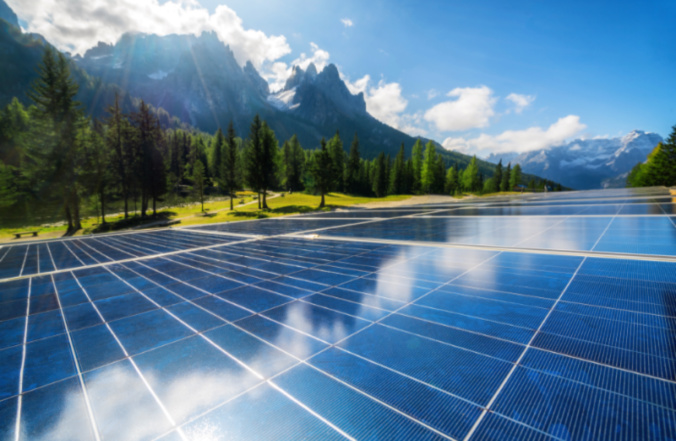Power generation plants produce the second largest share of greenhouse gases (approximately 25% of 2020 GHG emissions). Deep decarbonization of electricity generation, together with electrification of many end-use activities, is necessary to limit human impact on climate change and its damages. The most significant current and foreseeable change in the electricity sector, is the rapid substitution of variable renewable energy (VRE) which includes wind and solar energy for offsetting fossil fuels in electricity generation. Unlike traditional generators, these are called variable renewable energy (VRE) resources as their output depends on weather conditions that at times can change rapidly. VRE generators cannot be dispatched to follow variations in electricity demand. Energy storage can play a critical role in balancing electricity supply and demand that can provide other services needed to keep decarbonized electricity systems reliable and cost-effective.
Energy storage has the potential to become a significant contributor to our system’s capacity, with new installations reaching 132 GW by 2050, even with NREL’s most conservative storage assumptions. The energy storage market potential (specifically for BESS) is strongly tied to the growth in PV. The diurnal pattern of PV, and its impact on net load, further increases the potential for storage. Prices for BESS are projected to continue on a downward trend, thanks to demand driven by the EV market. But the downside is, in absence of regulatory mandates or subsidies, BESS may not be cost-effective in many regions.
As policy makers across the world design and implement policies to achieve long-term deep decarbonization of the power sector, the share of VRE generation is expected to grow substantially in the next few decades. The International Energy Agency’s Roadmap to Net Zero by 2050 assumes that solar photovoltaics and wind will account for 70% of global electricity generation in 2050. The DNV Energy Transition Outlook 2017 report concluded that the electricity demand will rise by 140% by 2050, and of this, 72% will be generated by renewables. This transition implies an enormous change in the configuration of the electricity system including generation, transmission, and storage.
There is a growing interest in deploying energy storage for a variety of applications on the electricity grid. For example, The U.S. Energy Information Administration (EIA) classifies battery projects based on eleven leading applications that overlap to some extent to include frequency regulation and other ancillary services such as spinning reserves voltage support storage for excess wind and solar generation, load management, system peak shaving, transmission and distribution network deferral, backup power, and energy arbitrage (where arbitrage involves effectively moving the electricity from one time period to another (EIA 2020a). Deploying energy storage for stacked value instead of for a single purpose can further help achieve a positive ROI. Various efforts currently helping BESS’s to flourish are:
- A creative use of communication and control standards like IEEE1547, Modbus, OPC-UA and DNP3.
- The FERC Order 841(in 2018) that required ISOs to enable the participation of storage providers in regional markets and Order 2222 (in 2020), which required ISOs to remove barriers to the participation through aggregators, of distributed energy resources in regional markets.
- The ability to participate in markets like PJM, CAISO, ERCOT and MISO.
- DOE investments in early-stage research have helped to significantly advance energy storage technologies that the industry is unlikely to have developed on its own. Continued research activities with specialized DOE facilities hold significant potential to further improve energy storage performance and cut costs. Continued R&D efforts that target further progress to boost industry acceptance and enable the next generation of energy storage systems.
According to MIT’s recently published report “The Future of Energy Storage,” investing in and operating storage so that it effectively plays appropriate roles in future decarbonized power systems will pose novel operational and financing challenges. It will also pose challenges in terms of regulation and market design.
Based on various recommendations provided in MIT’s report, various action items that can drive the transition to least-cost high-VRE systems with storage include proactive participation of state and federal agencies to design and implement regulatory mechanisms.
Rules to allow owners of storage (and generation) assets to sell services to vertically integrated utilities facilitating efficient investment in and use of “behind-the-meter” generation and storage.
Aligning market rules to accommodate the participation of aggregators in wholesale markets and enabling efficient participation of both grid-based storage and distribution-level generation and storage to include those facilities located on the customer’s premises, wholesale energy and ancillary service markets, as well as in capacity markets. To redesign the capacity mechanism based on the stochastic properties specific for VRE generation and storage by replacing the capacity mechanism with an enhanced focus on integrated resource planning. Provisions need to be in place to:
- Integrate storage to transmission planning processes and distribution system planning.
- Allow storage devices to provide wholesale power market services wherever physically possible.
Continuity of U.S. Department of Energy (DOE) backed R&D efforts to test newer technologies including support for well- designed randomized controlled experiments for:
- Devising efficient and equitable retail rate designs for high-VRE systems with storage.
- Encouraging their widespread adoption.
Energy storage is key for transitioning power generation to VRE and providing an integrated solution to some of the most critical energy needs: flexibility for a diverse and secure electricity generation portfolio, and enhancing economic competitiveness for remote communities and targeted micro-grid solutions. Storage technologies strengthen and stabilize the U.S. grid by providing backup power, leveling loads, and offering a range of other energy management services.
The Nor-Cal team is very experienced in PV-Solar power plants, with or without the inclusion of BESS. We can assist you with your current or upcoming SCADA, EMS, MET Station solution needs, and help facilitate optimized utilization of resources to meet PPA requirements. Schedule a call with us today.





